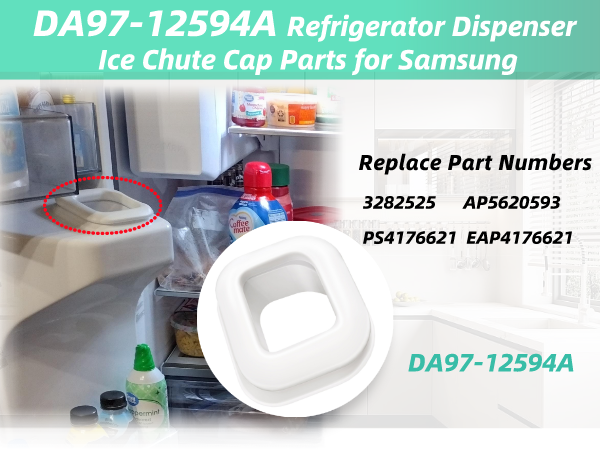How to Clean Samsung Ice Maker: Quick Steps
This post contains affiliate links. As an Amazon Associate, we earn from qualifying purchases.
That musty smell in your ice cubes shouldn’t be your new normal. If your Samsung ice maker is producing cloudy ice or showing black specks, it’s screaming for attention. Mold thrives in the constant moisture of ice makers, turning your refreshing drinks into potential health hazards. This how to clean Samsung ice maker guide walks you through the exact steps to restore your system to pristine condition—no special tools required. You’ll eliminate stubborn mold, prevent recurring contamination, and enjoy crisp, odor-free ice within an hour.
Samsung’s French door and side-by-side models hide moisture traps where bacteria flourish, especially under ice maker caps and in water lines. Ignoring these issues leads to black specks in ice cubes and unpleasant tastes that ruin everything from cocktails to baby formula. By following this comprehensive cleaning protocol, you’ll address the root causes behind 95% of Samsung ice maker problems. Let’s transform your ice from questionable to crystal clear.
Power Down and Disconnect Your Samsung Ice Maker
Never skip these critical safety steps. Working with water and electricity demands strict protocols to prevent electrical hazards or water damage. Your first move in how to clean Samsung ice maker systems must be complete isolation from power and water sources.
Essential Power and Water Disconnection
- Unplug the refrigerator completely from the wall outlet—don’t rely on just turning off the ice maker
- Turn off the water valve behind your fridge (rotate clockwise until tight) to stop water flow
- Empty the ice bin entirely, discarding all existing ice cubes (do not consume them)
- Flip the ice maker switch to OFF position (locate the wire arm or electronic toggle inside the freezer)
Model-Specific Disconnection Tips
For RF28JBEDBSR/AA models: Find the red manual switch beneath the ice maker assembly and press it to disconnect. French door units like RF27T5241SR require lifting the wire arm fully upward to disable ice production. If your model has electronic controls, navigate to settings and select “Ice Maker Off” before proceeding. Skipping these steps risks flooding or electrical damage during cleaning.
Remove and Deep Clean the Ice Bin

The ice bin collects more than cubes—it traps odors, minerals, and mold spores that contaminate every new batch. Deep cleaning this component solves 80% of ice quality issues in Samsung refrigerators.
Proper Ice Bin Washing Process
- Remove the bin by lifting straight up and pulling forward (avoid twisting to prevent damage)
- Wash with warm, soapy water using a soft sponge—never abrasive pads that scratch surfaces
- Rinse thoroughly under running water until no suds remain (residue affects ice taste)
- Air-dry completely for 30-45 minutes—damp bins reintroduce moisture that breeds mold
Eliminate Stubborn Odors with Vinegar Soak
For persistent smells, prepare a solution of 1 part white vinegar to 3 parts water. Submerge the bin for 20 minutes, then scrub seams with a soft toothbrush. Rinse three times to remove all vinegar traces—any leftover solution will taint your ice. Never use bleach; it creates dangerous fumes when mixed with residual vinegar.
Clean Ice Maker Interior Components
Mold hides in tiny crevices and water tubes where moisture lingers. Systematic cleaning of internal components stops contamination at its source.
Targeted Interior Cleaning Protocol
Prepare solution: Mix equal parts white vinegar and warm water in a bowl
– Wipe ice mold cavities with vinegar-soaked microfiber cloth (focus on corners where mold clusters)
– Clean ejection arms using cotton swabs dipped in solution—rotate arms to access all angles
– Clear water fill tube by threading a pipe cleaner through the narrow opening (3-5 gentle passes)
– Address drain holes by probing with a dry cotton swab to remove debris buildup
Eliminate Visible Mold Safely
Spot black specs? Gently scrub affected areas with a soft-bristled toothbrush dipped in vinegar solution. Never use metal tools—they scratch surfaces and create new mold havens. For RF28JBEDBSR/AA models, remove the ice maker cap by pressing side tabs; clean rubber seals thoroughly as they trap moisture.
Flush Water System to Remove Residue
Residual cleaning solution affects ice taste for days. Proper flushing prevents this entirely and ensures contaminant-free operation.
Mandatory Post-Cleaning Flush Procedure
- Reconnect water supply valve and restore power to the refrigerator
- Run water through dispenser for 2-3 minutes (collect in pitcher to check clarity)
- Turn ice maker ON and wait for first cycle completion (typically 90 minutes)
- Discard first 2-3 batches of ice—this removes any remaining cleaning residue
Deep System Flush for Persistent Issues
For recurring odors: Pour 1 cup white vinegar directly into the water reservoir (if accessible behind freezer panel). Let sit 10 minutes, then flush with 3-4 gallons of water through the dispenser. This dissolves mineral deposits in hidden tubing that cause white residue on ice cubes.
Model-Specific Samsung Ice Maker Cleaning

Not all Samsung units require identical approaches. Understanding your model prevents unnecessary disassembly or missed problem areas.
RF28JBEDBSR/AA Critical Maintenance
This model develops mold under the ice maker cap monthly. Remove the cap by pressing side tabs and lifting—it snaps back easily. Clean cap interior with vinegar solution, paying special attention to the rubber gasket where moisture pools. Reinstall only when completely dry.
RF27T5241SR Special Guidance
Samsung technicians confirm: This model doesn’t require manual cleaning if producing standard-sized cubes. Focus on filter replacement every 6 months instead. If ice appears cloudy, replace the water filter first before attempting internal cleaning.
Prevent Mold Growth Between Cleanings
Prevention beats deep cleaning every time. These habits keep your Samsung ice maker mold-free for months.
Daily Prevention Habits
- Use ice within 2-3 weeks—stale ice absorbs freezer odors and promotes bacterial growth
- Keep freezer at 0°F (-18°C) or below (verify with thermometer) to inhibit mold development
- Replace water filter every 6 months (or when indicator lights activate)
- Wipe ice chute weekly with a dry microfiber cloth to prevent moisture buildup
Environmental Controls
Reduce ambient humidity around your refrigerator by:
– Running exhaust fans during cooking to minimize steam exposure
– Fixing kitchen leaks immediately (even small drips raise humidity)
– Maintaining 3+ inches of clearance behind the unit for proper airflow
Tools and Supplies Checklist
Using incorrect tools damages delicate components. Stock these items before starting your how to clean Samsung ice maker project:
Approved cleaning agents:
– White vinegar (for mold and mineral deposits)
– Mild dish soap (for bins and trays)
– Warm water (never hot—it warps plastic parts)
Essential tools:
– Soft microfiber cloths (lint-free cleaning)
– Cotton swabs (tight spaces like drain holes)
– Pipe cleaner or 18-gauge wire (unclogging tubes)
– Soft-bristled toothbrush (scrubbing seals)
Never use:
– Bleach or ammonia-based cleaners (create toxic fumes)
– Steel wool or abrasive pads (scratch surfaces)
– Knives or sharp objects (puncture water lines)
– Steam cleaners (excess moisture invites new mold)
When to Call Samsung Professionals
Some issues require specialized expertise. Don’t risk warranty coverage or safety with complex repairs.
Critical Service Indicators
- Persistent odors after two thorough cleanings
- Water leaks from dispenser or under fridge after reassembly
- Zero ice production 24 hours post-cleaning
- Grinding noises during ice-making cycle
Warranty Protection Protocol
Unauthorized disassembly voids Samsung’s warranty. For internal component issues like faulty water valves or motor failures, contact authorized service providers through Samsung’s website or 1-800-SAMSUNG. Always reference your model number (e.g., RF28JBEDBSR/AA) for accurate support.
Quick Troubleshooting After Cleaning
No ice after reassembly?
– Verify ice maker switch is ON (wire arm lowered)
– Confirm water valve behind fridge is fully open
– Check freezer temp is 0°F or below (use external thermometer)
– Wait 24 hours—system resets may delay first batch
Vinegar taste in ice?
– Discard 2 more batches and flush dispenser for 5 minutes
– Inspect ice bin for missed rinsing spots
– Run a vinegar-water solution through dispenser to neutralize
Black specs return within weeks?
– Replace water filter immediately (even if not due)
– Check water supply line for cracks near connections
– Consider professional water testing for well systems
Clean ice transforms ordinary drinks into refreshing experiences. By following this how to clean Samsung ice maker guide every 3-6 months, you’ll enjoy crystal-clear cubes free from mold, odors, and contaminants. Your Samsung ice maker will thank you with years of reliable service—and your taste buds will notice the difference immediately. Remember: consistent prevention through filter changes and humidity control beats emergency deep cleans every time. For RF27T5241SR owners, prioritize filter replacements over manual cleaning, while RF28JBEDBSR/AA users must tackle that cap monthly. Now grab your vinegar and reclaim the pure, crisp ice your Samsung deserves.
